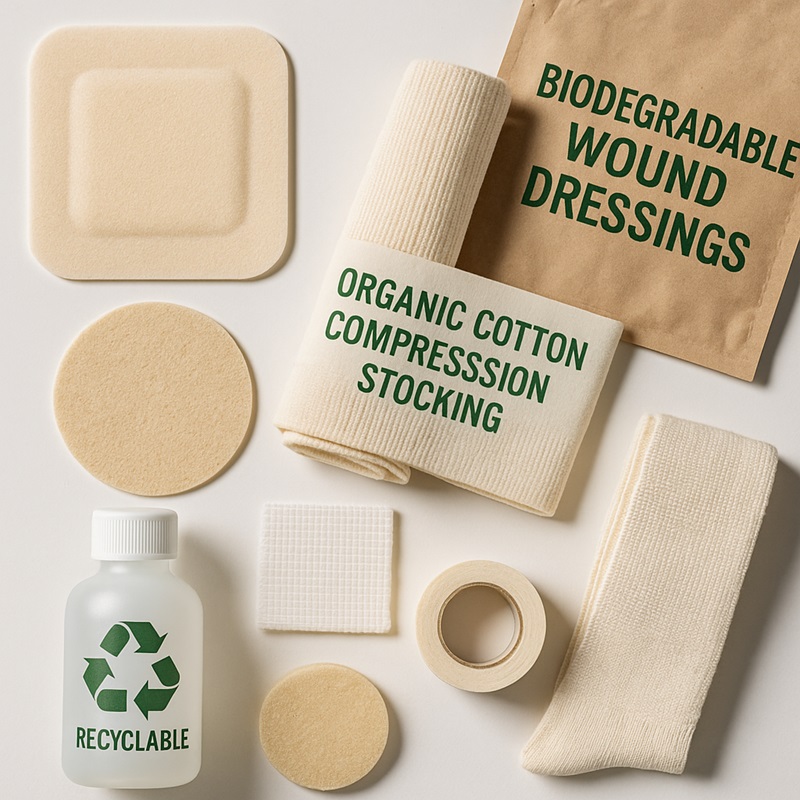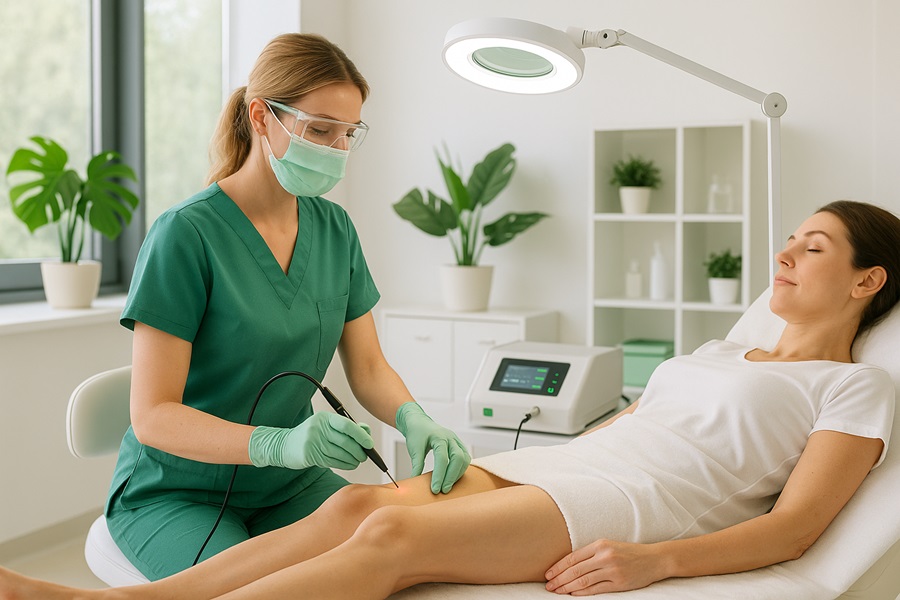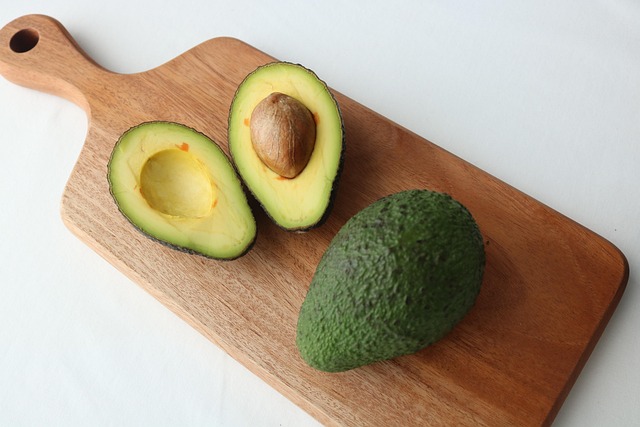As we move towards a more sustainable future, every industry is rethinking its environmental impact – including healthcare. While hospitals and clinics are places of healing, they also generate a ton of waste and consume a lot of energy. But today a new generation of wound and vascular care is emerging – where innovation meets sustainability. Welcome to the world of green healing where biodegradable bandages, laser treatments and regenerative technologies are changing how we recover – and care for the planet too.
The Environmental Cost of Traditional Wound and Vascular Care
Healthcare is essential but it’s also resource hungry. Conventional wound care relies on single use materials like gauze, plastic wraps and petroleum based adhesives. Vascular treatments particularly surgical interventions like vein stripping require energy heavy hospital infrastructure, chemical sterilization and long inpatient stays.
Globally healthcare accounts for 4.4% of total carbon emissions – more than the aviation industry. A big chunk of that is from wasteful materials, high energy usage in surgical environments and the sheer volume of disposables used every day in treatment rooms. It’s clear – healing our bodies shouldn’t mean harming the planet.
The Shift Towards Sustainable Solutions in Modern Medicine
Luckily the tide is turning. Hospitals and biotech companies are investing in sustainable solutions. Some are switching to reusable surgical tools, others are sourcing wound care products made from biodegradable fibers and more are adopting outpatient treatment models that cut energy usage by 90%.
These innovations are not just eco-friendly – they’re cost effective and often lead to better patient outcomes. In short green healthcare is becoming smart healthcare.
Patient Awareness Is Growing: Stats on Demand for Greener Healthcare
Consumers today aren’t just looking for the best care—they want the most responsible care. Public awareness about the environmental impact of healthcare is increasing, and the numbers prove it.
- 73% of surveyed U.S. patients say they prefer healthcare providers who actively reduce their carbon footprint (Health Care Without Harm, 2023).
- Over 50% of millennials say that a clinic’s sustainability practices influence their decision when booking appointments.
- Google Trends data shows a 3-year upward spike in searches for terms like:
- “eco-friendly surgery”
- “biodegradable bandages”
- “sustainable wound care products”
As this awareness grows, forward-thinking clinics are responding—not just with marketing, but with real investments in greener technologies, local outpatient care, and regenerative healing methods.
Biotech Meets Sustainability: Innovations Leading the Way
Bioengineered Dressings & Smart Bandages
Gone are the days when wound care meant layers of cotton and plastic. Now, hydrogel dressings, silver-infused foam pads, and biodegradable nanofiber wraps are making wound healing faster, safer, and greener. These materials degrade naturally, reduce dressing changes, and minimize landfill waste.
Green Materials in Compression Therapy
Compression therapy—a mainstay in vascular care—has also evolved. Brands are launching organic cotton compression stockings, recyclable packaging, and products made without harmful dyes or microplastics. These innovations protect both patients and ecosystems.
Traditional vein surgeries—like vein stripping—often require general anesthesia, surgical theaters, and hospital stays. These procedures come with high carbon footprints and waste outputs. Fortunately, minimally invasive alternatives are changing that.
Treatments such as laser vein ablation and radiofrequency closure are performed in outpatient clinics with local anesthesia, no hospital admission, and minimal recovery time. These procedures not only improve patient comfort but significantly reduce the environmental burden.
According to industry reports, several U.S. providers have adopted these minimally invasive methods as part of broader sustainability efforts—reducing waste, energy use, and the need for resource-intensive hospital stays. For patients researching treatment for varicose veins, these outpatient, eco-conscious options offer both effective results and a reduced environmental footprint.
In some regions, outpatient vascular care providers are embracing this model, offering minimally invasive varicose vein treatments that align with sustainability goals—reducing energy usage, cutting down on disposable waste, and providing patients with fast, eco-conscious care. For example, if you are looking for specialized care in Arizona, the vein clinic at Metro Vein Centers in North Scottsdale provides advanced, minimally invasive vein treatments. Their expert vein specialists focus not only on improving vein health and patient comfort but also on delivering care in an efficient, eco-conscious way.
Regenerative Medicine in Wound Healing
Stem-cell infused dressings, growth factor gels and 3D printed tissue scaffolds are opening up regenerative wound care. These innovations heal faster, reduce repeat treatments and minimize pharmaceuticals.
In addition to better health outcomes regenerative solutions produce less waste and use fewer synthetic materials so are more eco friendly.
How Clinics and Patients Can Go Greener
Clinics Can:
- Use biodegradable or recyclable medical supplies
- Use energy efficient equipment
- Offer minimally invasive treatments when possible
- Partner with eco friendly suppliers
Patients Can:
- Ask about low waste or outpatient options
- Choose local clinics to reduce travel emissions
- Dispose of bandages and medicine packaging properly
- Support providers who prioritize sustainability
What Regulations and Standards Govern Green Medical Practices?
Green healthcare is no longer just a nice to have – it’s now supported by formal policies and international health frameworks. Regulatory bodies are pushing for responsible medical waste management and sustainability standards in healthcare.
- S. Environmental Protection Agency (EPA): Sets guidelines under the Medical Waste Tracking Act and supports initiatives that reduce waste from healthcare facilities.
- LEED Certification for Healthcare Facilities: Promotes low impact energy use, indoor air quality and responsible waste disposal.
- World Health Organization (WHO): Emphasizes environmentally sound management of healthcare waste, particularly in wound care and surgical units.
- Health Care Without Harm: Works with hospitals to adopt sustainable procurement and energy efficient technologies.
- State Level Protocols: California and Massachusetts have strict rules on single use plastics and energy efficiency in healthcare facilities.
✅ Some outpatient clinics are already aligning with these emerging standards by offering resource efficient, minimally invasive treatments that reduce the need for energy intensive hospitalization.
Traditional vs Eco-Friendly Vascular Care
| Aspect | Traditional Approach | Eco-Innovation |
| Bandages | Single-use cotton & plastic | Biodegradable hydrogel dressings |
| Vein Treatment | Surgical vein stripping | Laser ablation or RF closure |
| Waste Output | High | Low |
| Recovery Time | Days to weeks | 1–2 days |
| Emissions | High (hospital-based) | Low (outpatient/localized) |
Why Sustainable Healthcare Matters for a Greener Planet
As the world faces rising temperatures, resource shortages, and ecological stress, even small shifts in medical practice can have a huge impact. If just 10% of hospitals switched to eco-friendly wound and vein care practices, it could cut millions of tons of waste and carbon emissions annually.
Moreover, integrating sustainability into healthcare inspires innovation—driving better products, smarter services, and more compassionate care systems that consider both people and the planet.
Some Examples: How Clinics Are Going Green
Across the U.S. and globally, medical providers are leading the charge in sustainable healing. Here are just a few examples:
Cleveland Clinic
- Reduced operating room energy use by 25%
- Switched to reusable surgical gowns, eliminating tens of thousands of pounds of textile waste annually
⚡ Kaiser Permanente
- Achieved carbon neutrality in 2020 across all hospitals and clinics
- Uses low-emission anesthetic gases and has strict waste segregation protocols
Example – Outpatient Vascular Care Clinic
- Offers minimally invasive varicose vein treatment that avoids energy-intensive surgeries
- Outpatient care model minimizes emissions from overnight stays and medical waste
- Uses advanced laser and radiofrequency technologies that cut down on disposable materials
These clinics show that sustainable care doesn’t sacrifice quality—it enhances it.
Product Spotlight: 2025’s Top Eco-Friendly Wound and Vein Care Materials
| Product Type | Eco-Friendly Option | Key Benefit |
| Wound Dressings | Alginate-based (seaweed) | Fully biodegradable, super absorbent |
| Compression Stockings | Organic cotton & bamboo blends | Renewable fibers, no microplastics |
| Surgical Gloves | Nitrile-free, biodegradable gloves | Decompose within 2–5 years, unlike standard gloves |
| Vein Treatment Devices | ClosureFast RF & EVLT lasers | Low energy use, minimal disposables |
| Packaging | Recyclable or compostable wraps | Reduces landfill contribution |
Tip for Patients: Ask your provider about which of these materials they use, and whether your care plan includes options that minimize waste.
Final Thoughts: Healing the Body Without Hurting the Planet
The future of healthcare is not only high-tech—it’s low-impact. From biodegradable bandages to advanced vein treatments that avoid hospitalization, the new wave of wound and vascular care is proving that healing and sustainability can go hand in hand.
Clinics adopting these eco-friendly practices show that sustainable medical care is not just possible—it’s already here. By making thoughtful choices in how we treat common conditions like varicose veins, we can take meaningful steps toward a greener, healthier world.





